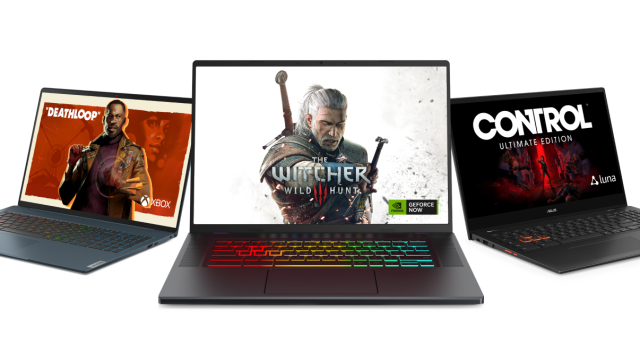Google has big plans for ChromeOS beyond catering to students and those looking for an ultra-affordable computer. The company is priming ChromeOS to help fill the gaping hole that Stadia left behind, and it’s partnering with what used to be its cloud gaming competition to do it.
Google’s latest endeavour hopes to spin the Chromebook platform as an alternative gaming device for folks who don’t necessarily have the time or money to manage a full-blown PC gaming setup or console. The company synced with three major Chromebook OEMs to manufacture laptops with specs specially tuned to this kind of use. Asus’s Chromebook Vibe CX55 Flip is a convertible model that boasts a 15.6-inch touchscreen display with a 144Hz refresh rate and 11th-gen Core i7 processor, while Acer’s Chromebook 516 GE touts a high-resolution display with a 120Hz refresh rate and support for advanced DTS audio. Lenovo’s Ideapad Gaming Chromebook is also beefy (for a Chromebook), with a WQXGA resolution display, a 120Hz refresh rate, and up to an 11th-gen Core i5. These laptop models require Wi-Fi 6E connectivity for maximum bandwidth allowance. And they all start under $1000.
Despite the recent slowdown of Chromebook sales, Google said it’s been working on this effort for the past two years — just as Stadia was attempting to find some footing. However, Google insists it was always the plan to work with third-party cloud-gaming services, regardless of Stadia’s existence. “We would have loved to have Stadia here, but the decision to shut down Stadia is by no means emblematic of the industry,” said John Maletis, VP of ChromeOS for engineering, design, and product, in a roundtable call with media.
Indeed, the cloud gaming suites you’ll play on these new Chromebooks are not Google’s. Instead, you’ll utilise Nvidia’s GeForce Now, Microsoft’s Xbox Game Pass, and Amazon’s Luna through their existing Progressive Web Apps. There’s even a promotion for trial accounts for GeForce Now and Luna to entice new players to figure out which third-party cloud they want to float on. Peripheral makers are also on board to make mice and headsets that work as inputs for ChromeOS, including SteelSeries and HyperX. Maletis added that the core idea behind this initiative was to “show up to where users are showing up, not to pin them into any particular service.”
There is a downside of all this: you’ll have to pay for internet that can facilitate the kind of constant pinging to the cloud Google hopes you’ll do with the new hardware. In its own internal testing, cloud suites like Nvidia Geforce Now managed under 60ms latency. Google says you’ll only need a minimum of 35 Mbps for smooth gaming.
It makes sense the company would attempt to leverage cloud gaming technology where it’s already found some success, but I can’t help but think about users burned by the shutdown of Stadia. When I asked how Google will ensure users who buy into this new path for ChromeOS aren’t left in the dust someday, Google cited its successful partners as the ones paving the way. “Geforce Now, Xbox, and Luna have been able to find a great business model,” said Matis. “From a Chrome OS perspective, it’s just so part and parcel to the principles we have of cloud-based computing. We see this as one of the biggest growth drivers for us. This is just the first gen.”
We’re working on getting one of these new Chromebook models in for review, so we can test first hand what gaming on ChromeOS truly entails.
